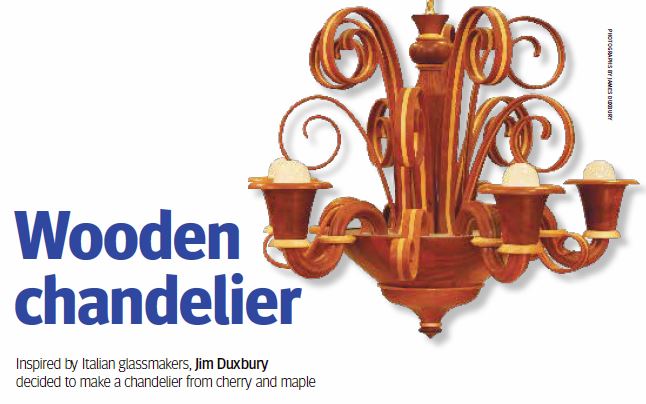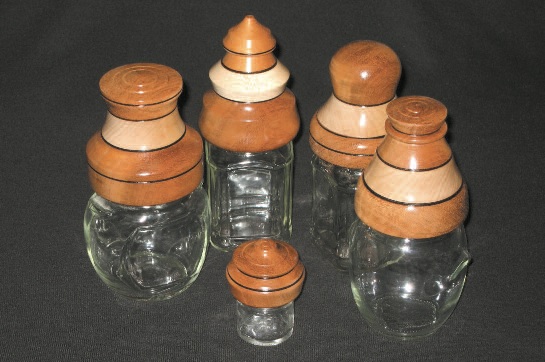Wooden Chandelier

It was with some apprehension that I took my first trip from North Carolina to Europe last spring. The plane trip was lengthy but soon after the arrival I was amazed by my surroundings and quickly immersed myself in the new environment – efficient trains, smaller stone roads, fast little cars, drivers that blow their horns at almost anything and the beauty of the countryside. It also didn’t take long for me to discover the grandeur of the old architecture and quality of craftsmanship. These are things that you can’t really fathom from pictures, they have to be experienced.
One of the highlights of the holiday was a short trip to the island of Murano, about one mile off the coast of Venice, where local glassmakers have been blowing glass and creating glass art objects for over a thousand years. Tens of thousands of unique glass pieces are on display in all shapes, sizes, colours and prices. The handcrafted designs of delicate glass chandeliers were beautiful and totally impressed me. Could that be my next challenge? A turned wooden chandelier? This would require precision turning, which is exactly the type of project that I enjoy.
In woodturning, two styles seem to emerge: artistic freestyle and precision. In ‘artistic’, one begins with a block of wood mounted on the lathe and a ‘one-of-a-kind’ piece is created. This process does not require measurements, instead the piece develops as the wood is turned away and the turner has the liberty to change shapes as desired. Mistakes, glitches and second tries are usually not a problem and are often a design opportunity. In ‘precision turning’ this is not an option. When the block is mounted in the lathe, the exact form of the finished piece is already known.
In most cases a dimensioned drawing has been made and multiple pieces can be turned from it. Every piece must match, so should there be a defect in the wood or the turning of it, a new piece has to be made. Although my signature pieces – custom wooden kaleidoscopes – are precision turnings, a chandelier constructed of wood would be my next big endeavour, and the advent of cool LED bulbs made it totally possible. The remainder of the holiday continued to open my eyes to the talents and craftsmanship of the ancient world, but my thoughts kept coming back to those chandeliers – those beautiful chandeliers! On the plane home I sketched out some designs and by the time we landed, most of the basic details of this new creation were already on paper. In this article, I will show you how to go about making your own version.
Click below to download the full article in PDF format:

